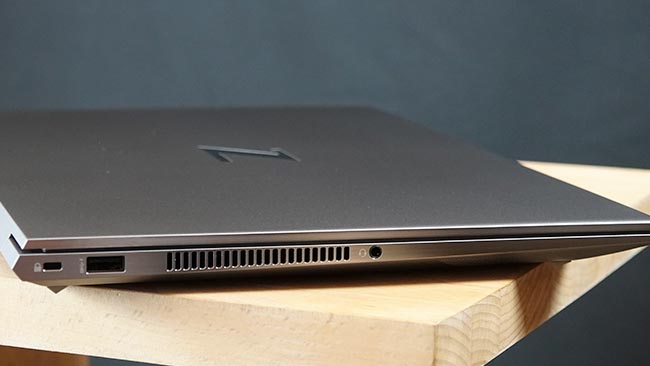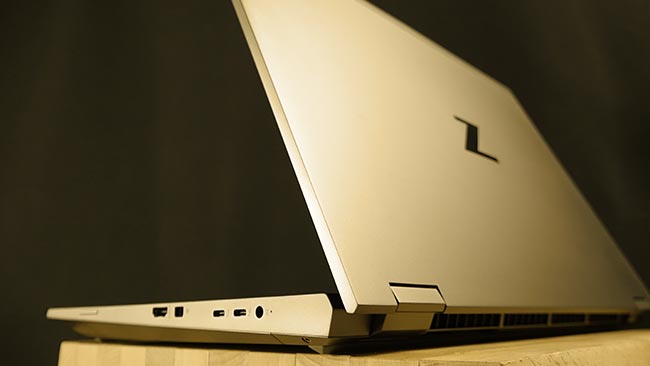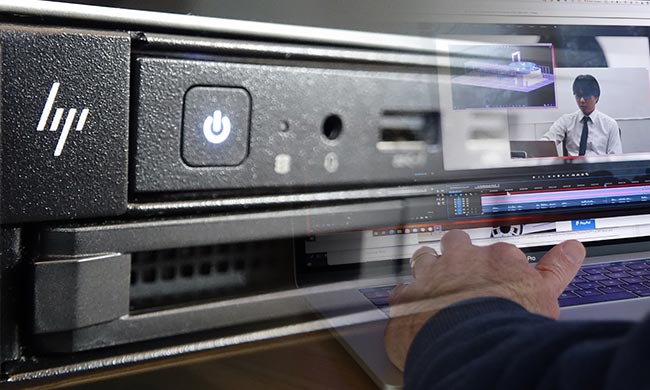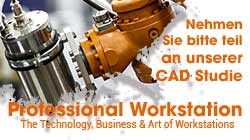COVID shifted the mobile workstation market in six months
Year after year the workstation market has been shaped by two trends. Desktop workstation demand was larger than mobile workstation demand, and mobile workstation demand was growing every year.
At the start of 2020, HP forecasted mobile workstation demand to surpass desktop demand in 3 to 4 years. Then the global pandemic hit. The result? Mobile workstation demand eclipsed desktop workstation demand in 6 months.
This rapid market shift is one of many reasons that I was excited to talk with David Greco, worldwide mobile workstation product management lead at HP. Our discussion focused on customer problems and HP’s efforts to solve those problems.
The changing work environment
The sudden market shift caused problems for customers and HP alike. Mobile workstation supplies were tight. The demand for mobile workstations hit the entry-level Firefly product line hardest, but the increased demand impacted the entire product range including HP’s highest end Fury mobile workstations.
Even with the end of the pandemic in view, David Greco projects the future work environment to consist of work in the office, from home, and on-the-go. Many HP customers agree. With a return to pre-pandemic work habits unlikely, HP expects the mobile workstation vs desktop workstation market shift to remain.

It's thin and very light, so cooling is important (for performance) and connectivity is important (for productivity)
COVID did not change the market as much as it accelerated an existing market trend. The good news for customers is that HP’s workstation line was already well designed for a diverse, mobile workforce. David and I discussed how HP understands customer problems and how their products help to solve customer problems.
Pre-pandemic, a focus on performance, portability, technology
HP did not see a pandemic coming any more than you and I did. But at the beginning of 2020, the HP team was preparing to launch a 7th generation of ZBooks with newly redesigned mobile workstations that were much more than a technology refresh.
The G7 release would position HP to meet the demands of a broad range mobile professionals. HP based their product design on three key points.
The first point: performance. Whether the customer selects an entry-level workstation or the top of the line model, HP understands that the customer needs a workstation. And that means the customer expects power. In each category, HP strives to provide customers options for the highest possible in-class performance.
The entry-level Firefly comes with an entry-level T500 GPU for which HP increased the graphics memory to 4 GB in order to boost performance. The price sensitive ZBook Power provides options from entry-level specs up to Core i9 processors, RTX A2000 graphics, 64 GB of memory, 4 TB of SSD storage, and a 4K display.
The sleek ZBook Studio is a light-weight wonder that still can deliver RTX A5000 graphics and a top-of-the-line Core i9 in a 1.79 kg package. The 15 inch and 17-inch ZBook Fury models focus on the highest performance and expandability, all the while keeping the same sleek design.
The second point: portability. David Greco is clear. This is about weight, not just size. Even the 17-inch ZBook Fury – the most expandable and most capable mobile workstation in the ZBook family is on a diet at 2.76 kg.

The HP ZBook Fury 17 delivers heavy-weight power in a 3 kg package
The third point: technology. And this means the technology that a customer requires to get a job completed as rapidly as possible. Whether it is the GPU choice, extensive memory and storage, an SD card reader, connectivity options, or a DreamColor display, HP works hard to provide the technology the customer needs in the mobile workstation.
The point here is not to be an advertisement for ZBooks, but to point out the obvious. If a mobile workstation vendor is focused on the three points above and has a broad product line, then that vendor will launch hardware that directly fits the needs of a very wide range of workstation customers who suddenly find themselves working from home.
Security and Sustainability
Mr. Greco and I continued the discussion with 2 additional points that he feels are important: security and sustainability.
The workstation is the frontline of security defense. Three HP security products provide protection against threats to the workstation. HP Sure Start, HP Sure Click, and HP Sure Sense.
David Greco explains that these three free security features protect your workstation hardware from the first level of security threats.
Sure Start protects the workstation BIOS and other firmware inside your ZBook. It uses a microcontroller to monitor the running BIOS. If the running BIOS is compromised, Sure Start will restore the BIOS automatically.
Sure Click protects the workstation from malevolent websites and email attachments by opening them in a “micro virtual-machine” and protecting the workstation from the security threat.
Sure Sense provides anti-malware security. It is based on artificial intelligence. In place of using a malware database, an AI detects suspicious software activity. This provides protection against known malware programs and unknown malware.

HP Sure Sense uses artificial intelligence to detect malware attacks.
With these three tools, the workstation is protected from attacks using hardware-based protection, software isolation techniques, and artificial intelligence. The protection is active whether the workstation is online or offline.
A second point in our discussion was about sustainability. Sustainability is a company focus at HP and it is not limited to the mobile workstation product line.
The mobile workstation chassis are aluminum and recyclable. The plastics use a mix of recyclable plastic from the oceans – recovered from beaches – and industrial plastic. Why the mix? At this time, the ocean-recycled plastic is not of sufficient quality and needs to be mixed with industrial plastic.
Remote work is not going away
HP has been offering remote access to workstations for many years. Their ZCentral Remote Boost software allows users to connect to their workstation in the office from any location. I looked at this software while reviewing HP’s rack-mounted workstation, the similarly named ZCentral 4R workstation.
Basically, ZCentral Remote Boost puts your remote workstation in a window on any Windows, Linux, or Mac computer. It consists of a “Sender” component running on the remote workstation, and a “Receiver” component running on your local machine.

HP's ZCentral Remote Boost software is fast, free remote access and collaboration software.
Beyond offering remote access, the Remote Boost software includes collaboration tools that allow multiple users to work on the same remote workstation from multiple, dispersed local client computers.
It should be clear that this was a useful tool during the COVID confinement period. It is also a great tool for the coming years as many of us will not be returning to the office at the same levels as before. And it is a useful tool to have once we begin traveling again.
The audacity to design the ultimate mobile workstation
What happens when you have the audacity to say, “we’re going to build the ultimate mobile workstation”? David's team did and what happened was the release of the ZBook Studio.
Let me be clear, they did not succeed. There were trade-offs. But it wasn’t for a lack of effort, and their “failure” is a mobile workstation unlike anything you will find from other vendors.
Listening to their customers, HP understood that users want light, portable workstations. They also want power. Oh, and they want choices.
HP set weight (under 1.8 kg) and size (under 1.8 cm) constraints. Then they looked at the performance horizon.
While meeting the constraints, they packed in an RTX A5000 with 16 GB of graphics memory, and a Core i9-11950H with eight cores and a Turbo Boost clock speed of 5 GHz.
Where did HP “fail” in this ultimate mobile workstation design? Their idea of the ultimate mobile workstation includes more memory and storage. But to meet the weight and size constraints, the ZBook Studio is limited to 32 GB of memory and 2 TB of storage.

HP continues to shoot for the ultimate mobile workstation design.
There are two important points to note. The first is that having an RTX A5000 and a Core i9-11950H make the ZBook Studio a powerful mobile workstation even with the memory and storage limitations. It's not perfect for every workflow, but is can be great for many workflows.
While I personally might want 64 GB of memory for working on a multi-application workflow, and 4 TB of SSD storage for my video files, the available power in the ZBook Studio blows everything else at this size and weight out of the water. And it works great if I am focused on a single workflow such as editing in Adobe Premiere Pro or DaVinci Resolve.
And HP hasn’t stopped trying. It’s not hard to imagine that memory and storage providers are going to offer products in the future which will allow David's team to increase both the memory and the storage capacity.
A Final Perspective
HP is hardly alone at producing quality mobile workstations. However, talking to the head of product management means that you get to see how the sausage is made. In my conversation with HP’s David Greco, I learned how HP’s focus on customer needs for mobile computing placed HP in a good position to service customers during the COVID pandemic.
We can all hope that the near future won’t spring a new pandemic on us. None-the-less, most companies won't have their employees returning full time in the office. Which means that companies and workstation users will not be returning to pre-pandemic computing habits, either.
The future will likely be a mix of work in the office, work from home, and work on the road. The HP ZBook product line is not only what you needed last year, it gives you the products that you will want next year.






